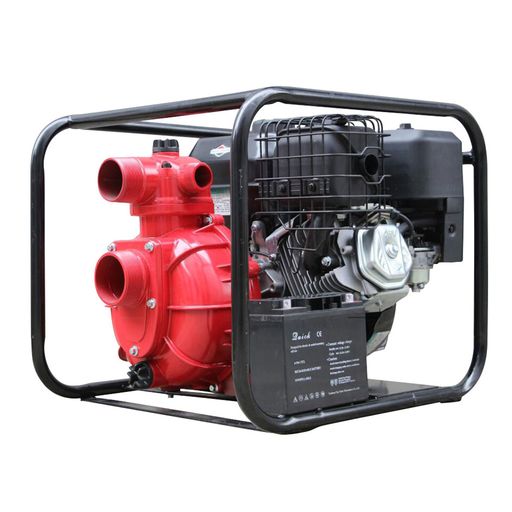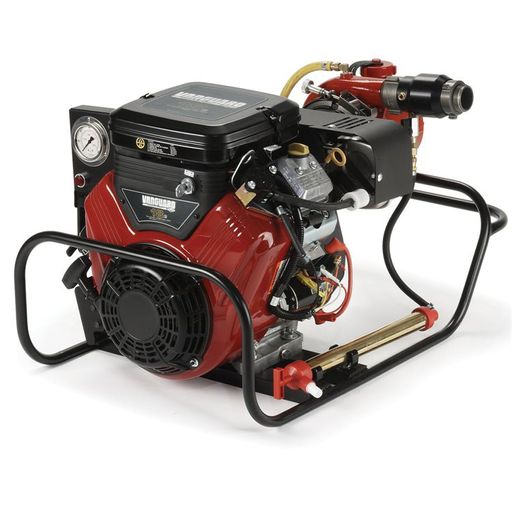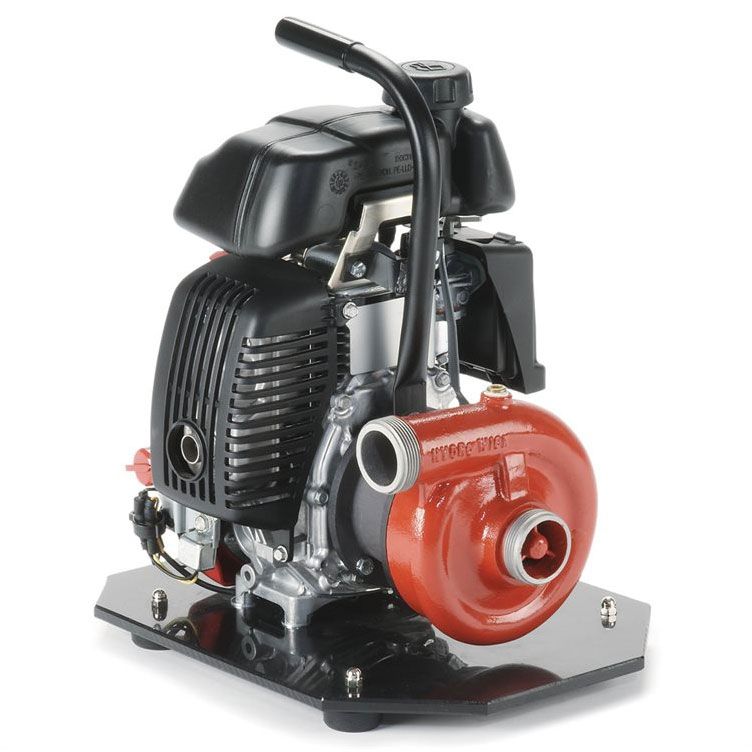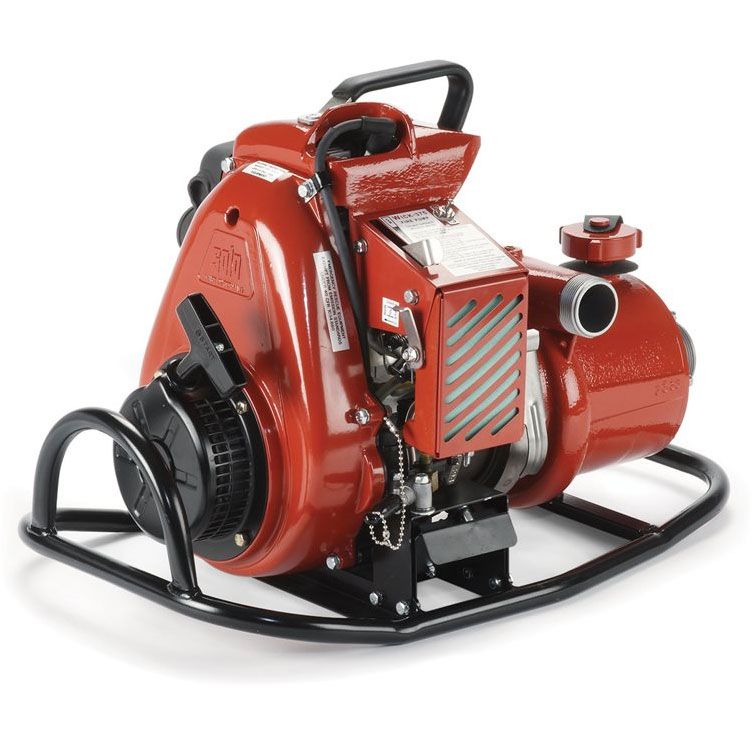This article is an abridged version of Wildfire Water Pumping and Sprinkler System Handbook by Jason Gogal, P.Eng. https://aquaeus.ca/wp-content/uploads/2024/11/Wildfire-Water-Pumping-and-Sprinkler-System-Handbook-5th-Edition.pdf
We get customers asking "How do I figure out what I need for fire pumps and sprinklers to protect my property?" every fire season so we wanted to address some of the basic questions.
Water Supply
While WFR Wholesale Fire & Rescue is a wholesale distribution company servicing Municipal and Industrial fire departments with all there fire fighting needs including sprinkler systems, we also supply sprinkler systems and accessories for use by rural residential customers that must rely on themselves for fire protection until the local fire department can reach them.
Our sprinkler systems sold to Municipal fire departments are designed to run off there city water hydrants, but wildfire sprinkler systems for rural areas depend on drawing water from a lake or river. You need a lot of water to effectively run a wildfire sprinkler system. But what is "a lot" of water? Is it 1,000 gallons, or 2,000 gallons, or 50,000 gallons? Most sprinklers use 5gpm or more which is 300 gallons in one hour. A fire water pumping system with just three sprinklers can use more than 7,200 gallons a day. Five sprinklers can use up to 12,000 gallons per day, and so on. So you need to use the pump system as the main water supply. Having your fire pump draw water directly out of a lake or river gives you a virtually unlimited source of water.
Wildfire Water Pumping System
Suction Hose and Strainers
Strainer with foot valve assembly and suction hose. This is used to prime and hold a prime on the fire pump, suction hose normally comes in 10ft sections. Suction hose should be located securely and completely submerged in the water at all times. Any air entering the suction line could cause pump damage, system failure, or safety issues. Also, try to avoid having the suction strainer sitting on the bottom of the water source. Suspending it or securely propping it about 12 inches up off the bottom is best. An anchor and float will accomplish this nicely. The use of a 5 gallon plastic jug is all that is needed. Common sizes for these is 38mm, 50mm and 65mm.
Hose
You can use 38mm, 44mm or 65mm on the discharge side of the pump. The most common used is 38mm forestry single jacket fire hose. If you have very long runs to get to your sprinklers I recommend using 65mm hose so you will not lose the pressure due to friction loss.
Example – for 100ft of 38mm hose you will lose 22psi but for 100ft of 65mm you will only lose 2psi. That is quite a difference and will determine what pressure you will have at your sprinklers once you have put it through your water thieves to get water to each sprinkler.
Sprinklers
The sprinklers used for wildfire systems are often the same type of impact sprinklers that are used in golf courses, farms, or parks and are used for wetting down the sides of buildings or outbuildings. These come with a spike to put in the ground or with a tripod to get up and over bushes and etc. They typically require 5gpm of flow at about 30 to 60psi.
Fire Pumps
Fire Pumps need to produce higher pressures and volumes than are not possible with typical off-the-shelf utility pumps. Fire pumps are also constructed to more careful tolerances and have different qualities than utility pumps. The pump is the most important part of the fire water pumping system and the most important thing to get right. It does all of the work, and without a reliable pump, you cannot have a reliable pumping system. There are many types of water pumps available, but only a few specific types are well suited for service in a wildfire pumping system. Pumps also range in price from $500 to a special high pressure wildfire pump for $5,000 or more. If you are considering buying a pump for a wildfire water pumping system, take the time to research your purchase.
Pump Curves showing pump performance is usually measured in units of pressure and flow. The pressure units are usually measured in feet or meters of head. Head is a term that means the pressure at the bottom of a water column of a certain height. There is 1 psi for every 2.31 feet of head. For example, if you see a pump that says “maximum 187ft total head,” what this means is that this pump can push water 187 vertical feet from a water source before the water will stop flowing from the end of the pipe. In other words, the pump will deadhead at 187/2.31 = 81 psi. This includes any height difference and pressure losses from the water source to the pump, so in this example, you will actually get a few psi less than 81 at the pump discharge (most pumps will draft up to 20ft but will lose performance as well). Flow is usually described in conversations in gallons per minute (GPM), but sometimes is shown in liters per second, liters per minute, or cubic meters per hour in manufacturers literature. Pumps are tested by manufacturers, and their performance is usually shown in a pump curve. It is important to understand how to read pump curves, and it’s easy to do once you see it. Pump curves show you how much pressure the pump can produce as a discharge valve is moved from completely closed to completely open, going left to right across the graph. Some pump manufactures show a maximum pressure and a maximum flow. These do not tell you how the pump really performs. A centrifugal pump will never produce both its maximum pressure and maximum flow at the same time. This is one of the pitfalls that it’s easy to fall into until you know better. A real wildfire pump will usually have its wet end painted solid red, and this is actually something you should look for and always ask for the performance chart.
More on Centrifugal Pumps
Centrifugal Pumps are the type of pumps used in the fire service
This type of pump has an impeller which spins and sucks water into the pump suction port. The pump impeller then throws the water against the wall of the pump, which is called the volute. The water pressure rises as it hits the wall of the pump, and the pressurized water then exits through the discharge of the pump. Depending on the size of the impeller, the size of the casing, the shape of the impeller, and the number of impellers, this type of pump will usually be able to either gently push a lot of water (a “volume pump”), or strongly push a smaller flow of water (a “pressure pump”). This type of pump will usually work for a sprinkler system if your property is within about 400 feet of a lake and at a low elevation compared to the lake. Their performance will not be very good if they have to lift water vertically more than about 30 feet or push it for more than about 500 feet. Also, as you add more sprinklers and allow the pump to produce more flow, the pressure can drop off dramatically with this type of pump. These pumps develop their highest pressures at low flows – at most, one or two sprinklers.
As you move up to larger engines and larger pumps these pressure pumps can create high pressures while also moving more water.
If you want to go to the Forestry pumps which are designed for light weight and sending water up the side of mountains and very long distances you will be paying about $5,000 and in most rural situations this is overkill for what is needed. They have more than one impeller, and turn fast to create high pressures (72,000 rpm 2-stroke instead of 3600 rpm 4-stroke). Maintenance is much more of an issue with 2-stroke motor pumps, and requires more work with mixing fuel, changing spark plugs, changing wear parts, adjusting carburetor needle settings, and so on. They can be very finicky and hard to start, 2-stroke motor pumps are extremely loud, run hard, and parts can wear out quickly during wildfire pumping service. Having said this, if you need the elevation and a lightweight pump you have no choice. If weight is not a concern then you may want to look at a medium pressure volume pump which has a 4-stroke engine. They are usually much more user-friendly and ultimately more reliable than a 2-stroke motor, and will cost much less than 2-stroke motor pumps. But note that the 2-stroke pump which is designed for the forest service is light to carry into the bush. A 4-stroke you will need two men to carry it or set up a dolly to move it.
A multi-stage centrifugal pump such as the popular Waterax Mark III (“Wajax”) wildfire pump or Wick 375 is capable of producing very high pressures approaching 400 psi at deadhead. This means that this type of pump can push water for very long distances down a discharge line. This type of pump also requires special discharge line hose and pipe that are designed to run at high pressures. 4-stage pumps such as the Mark III, Wick 375, and other very high pressure pumps are not usually capable of moving both high volumes of water and producing high pressures. There is a trade-off between high pressure and high flow, and you can’t really have both with the same style of pump. While a typical volume pump can move well over 100 GPM without losing much of its deadhead pressure, a “Wajax" or "Wick” pump’s discharge pressure will drop rapidly as the flow increases, and by the time it is producing about 90 GPM, the pump can only produce about 30 psi or less. This pump has enough power for many applications, and has some features that are desirable for wildfire crews.
Multi-stage pumps can be very powerful, but they must be used the right way for the best results. Forestry fire fighters will use these pumps in tandem to help move water great distances.
I recommend that most rural customers use a 4-stroke pump with (1, 2 or 3 impellers) depending on your situation.
Below is a few of the options we have for fire pumps. Please refer to our Forestry section for all the pumps and components we carry including sprinklers, hose, water thieves, adapters, fittings, nozzles and etc.
Frontier 13.5hp Medium Pressure Fire Pump
- 13.5hp B&S electric start with twin impeller
- 77mm (3") NPT inlet x (2) 38mm (1.5") NPSH & (1) 65mm (2.5") NPT outlets
- Max. Flow: 220gpm
- Max. Pressure: 115psi or 60gpm @ 100psi

Frontier 6.5hp Forestry Medium Pressure Fire Pump
- 6.5hp B&S 4 cycle manual start with twin impeller
- 38mm (1.5") NPSH inlet x (1) 38mm (1.5") NPSH & (2) 25mm (1") NPSH outlets

Wickman 4200 Forestry Pump
- 18hp Briggs & Stratton, 4 cycle, 4-stage (Chrysler Connection)
- 137lbs.
- 51mm (2") inlet/38mm (1.5") outlet
- No fuel tank or fuel line so this must be added

Wickman 100-4H Forestry Pump
- Single stage, 2.5hp 4 cycle forestry pump
- 20.2lbs.
- 2.5hp Honda
- 38mm (1.5") NPSH inlet/outlet
- Integrated fuel tank

Wickman 375 Forestry Pump
- 10hp Solo, 2 cycle, 4-stage (Chrysler Connection)
- 53.5lbs.
- 51mm (2") inlet/38mm (1.5") outlet
- No fuel tank or fuel line

Wickman 250 Forestry Pump
- 3-stage 8hp Chrysler 2-cycle forestry pump
- 31lbs.
- 51mm (2") inlet/38mm (1.5") outlet
- No fuel tank or fuel line these are extra